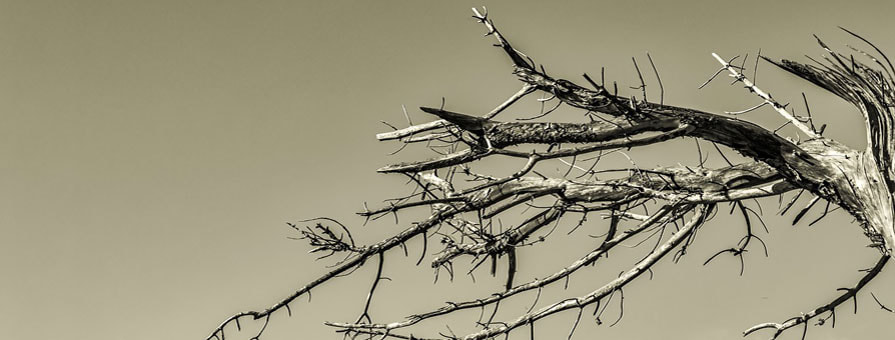As I walked the Pinery and surrounding neighborhoods last summer I noticed quite a few dead and dying trees, most of them aspens and many close to roads, driveways and houses. These dead trees may seem stable enough at first glance, but their roots are rotting away, and a strong wind is liable to topple them any time, possibly causing property damage or injury.
Even a small tree can do a lot of damage. If you are sure the tree won’t damage anything if it falls, you can leave it up to provide habitat for birds and other wildlife, otherwise you should plan to take the dead tree down.
Once other trees have leafed out, usually by late May, you can easily determine which ones need to be removed. Even if an aspen tree has a couple of leafy branches, it is only a matter of time before it finally gives out.
If in doubt as to the health of a tree, call a professional. Hiring a tree service for removal is strongly recommended. The risk of cutting a tree down and damaging property, ending up costing more than the removal, is high. They will dispose of the wood usually by grinding it up which makes good mulch and keeps it out of the landfill. If you have a fireplace or fire pit you can burn the larger pieces, but aspens make poor firewood.
Replace your dead Aspen tree with another tree (replacing them with another aspen is not recommended). Although aspens offer shade, texture and color for the landscape and are fast growing, they are not really suited for this area's climate. Aspens do best at elevations above 7000’ and, with the warmer summers we often experience, that is likely higher.
Other tree options: Ponderosa Pines do well here but if you want some diversity, which is always good, a local reputable nursery can recommend trees that do well in the in our area.
Ask for species that can tolerate hot, dry summers and don’t grow too fast because fast growth usually equals weakness and weak trees are less likely to withstand high winds and heavy snowfalls.
Location in the landscape is also important and a replacement tree need not go in the same spot as the removed one. I like to plant evergreens on the north side of my property to block the winter winds and deciduous trees on the south and west side where they provide shade in the summer and let the sun through to warm my house in the winter.
Keep in mind that a tree in a south or west exposure will require extra care and watering. You may want to have it planted by the tree nursery as the root ball can be very heavy and some nurseries will only guarantee the tree if they plant it. A tree service that will spray for pests and fertilize on a schedule will help the tree thrive.
Trees are an important part of our area's aesthetic and can add value to your property to say nothing of the value to wildlife habitat. But it’s easy to take them for granted and neglect their care until one comes crashing down!
